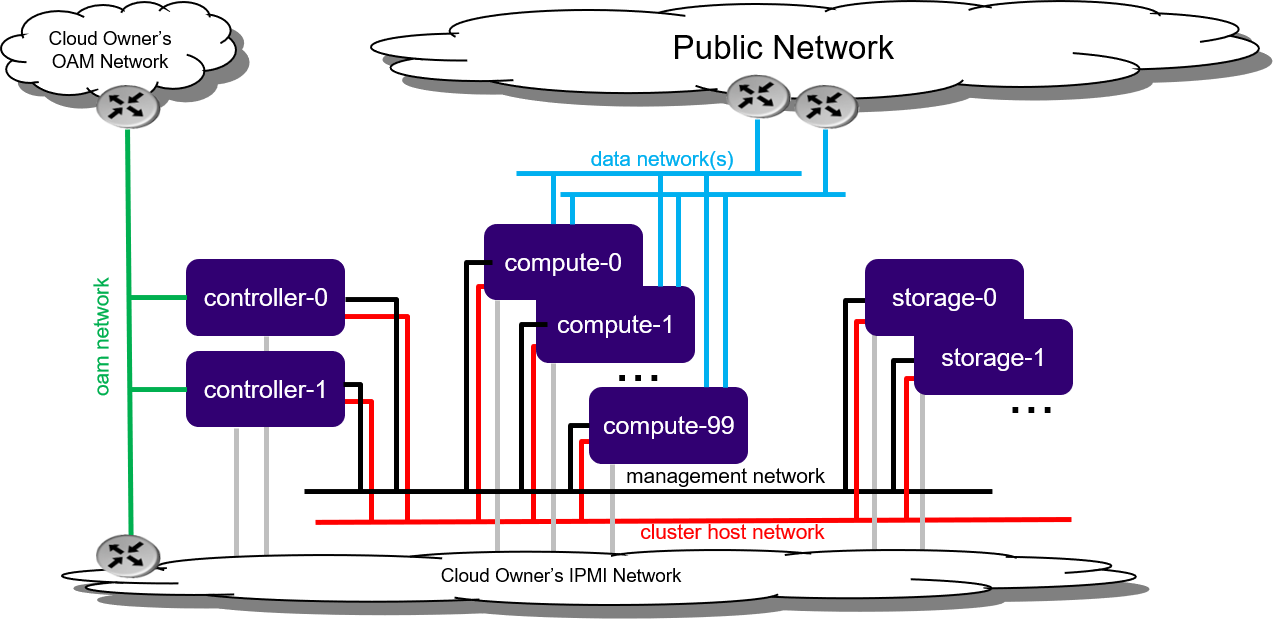Standard Configuration with Dedicated Storage¶
Deployment of StarlingX with dedicated storage nodes provides the highest capacity (single region), performance, and scalability.

See Common Components for a description of common components of this deployment configuration.
The differentiating physical feature of this model is that the controller, storage, and worker functionalities are deployed on separate physical hosts allowing controller nodes, storage nodes, and worker nodes to scale independently from each other.
The controller nodes provide the control-plane function for the system. Two controller nodes are required to provide redundancy. The controller nodes’ server and peripheral resources such as CPU cores/speed, memory, storage, and network interfaces can be scaled to meet requirements.
Storage nodes provide a large scale Ceph cluster for the storage backend for Kubernetes PVCs. They are deployed in replication groups of either two or three for redundancy. For a system configured to use two storage hosts per replication group, a maximum of eight storage hosts (four replication groups) are supported. For a system with three storage hosts per replication group, up to nine storage hosts (three replication groups) are supported. The system provides redundancy and scalability through the number of Ceph OSDs installed in a storage node group, with more OSDs providing more capacity and better storage performance. The scalability and performance of the storage function is affected by the OSD size and speed, optional SSD or NVMe Ceph journals, CPU cores and speeds, memory, disk controllers, and networking. OSDs can be grouped into storage tiers according to their performance characteristics.
Alternatively, instead of configuring Storage Nodes, you can configure an external Netapp Trident storage backend.
On worker nodes, the primary disk is used for system requirements and for container local ephemeral storage.
